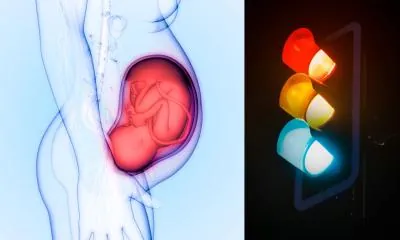
Revolutionary AI Tool Set to Transform Childbirth by Accurately Tracking Baby's Position
2024-11-15
Author: John Tan
Introduction
A groundbreaking AI-based software is on the horizon, promising to revolutionize the way childbirth is managed by accurately tracking a baby’s position during delivery. Expected to be available in delivery rooms by 2028, this innovative tool employs a user-friendly traffic light system to guide healthcare professionals on the safest course of action—whether to proceed with a natural delivery, utilize a vacuum extractor, or urgently pivot to a cesarean section when necessary.
Development and Support
Professor Tullio Ghi, a leading figure in the field of Gynecology and Obstetrics at the Catholic University of Rome, spearheaded the development of this tool. Coordinated through his expertise, the project has received significant support from the Clinical Physiology Institute of the Italian National Research Council and specialists from the University of Parma. The effort was part of the ISLANDS international study group, aimed at enhancing delivery outcomes globally.
Challenges in Childbirth
The journey through the birth canal can often be complicated, with fetal malposition being a prevalent issue that can stall labor. This occurs when the baby’s head is positioned incorrectly, leading to extended labor or the need for surgical interventions. Currently, even experienced medical practitioners face challenges in determining optimal baby positioning manually, with up to a 20% chance of misjudgment, potentially resulting in catastrophic outcomes for both mother and child.
Advancements in Ultrasound Technology
Ultrasound has become a valuable tool for assessing fetal positioning, yet not every healthcare operator is adept at interpreting these scans. This new AI system stands out by delivering real-time ultrasound analyses, offering immediate visual feedback: a green light indicates safe proceeding with the vacuum, a red light calls for an emergency cesarean, and a yellow light suggests uncertainty.
Trial and Results
In extensive trials involving 2,154 ultrasound images from 16 different medical centers around the globe, the AI demonstrated remarkable efficacy. Professor Ghi reported an impressive accuracy rate of 94.5% and a sensitivity level of 95.6%, showcasing the technology's potential to significantly reduce labor complications.
Conclusion and Future Steps
As Professor Ghi emphasized, their AI model can evaluate fetal head position in mere seconds, ensuring that time-critical decisions can be made efficiently and accurately. The next steps involve further validation of the software with larger patient groups before it can be integrated into routine clinical practices. If forthcoming results remain promising, this advanced AI tool could very well become a staple in obstetric procedures within the next three to four years.
Stay Updated
Stay tuned for more updates on this life-changing advancement in childbirth technologies!


 Brasil (PT)
Brasil (PT)
 Canada (EN)
Canada (EN)
 Chile (ES)
Chile (ES)
 España (ES)
España (ES)
 France (FR)
France (FR)
 Hong Kong (EN)
Hong Kong (EN)
 Italia (IT)
Italia (IT)
 日本 (JA)
日本 (JA)
 Magyarország (HU)
Magyarország (HU)
 Norge (NO)
Norge (NO)
 Polska (PL)
Polska (PL)
 Schweiz (DE)
Schweiz (DE)
 Singapore (EN)
Singapore (EN)
 Sverige (SV)
Sverige (SV)
 Suomi (FI)
Suomi (FI)
 Türkiye (TR)
Türkiye (TR)